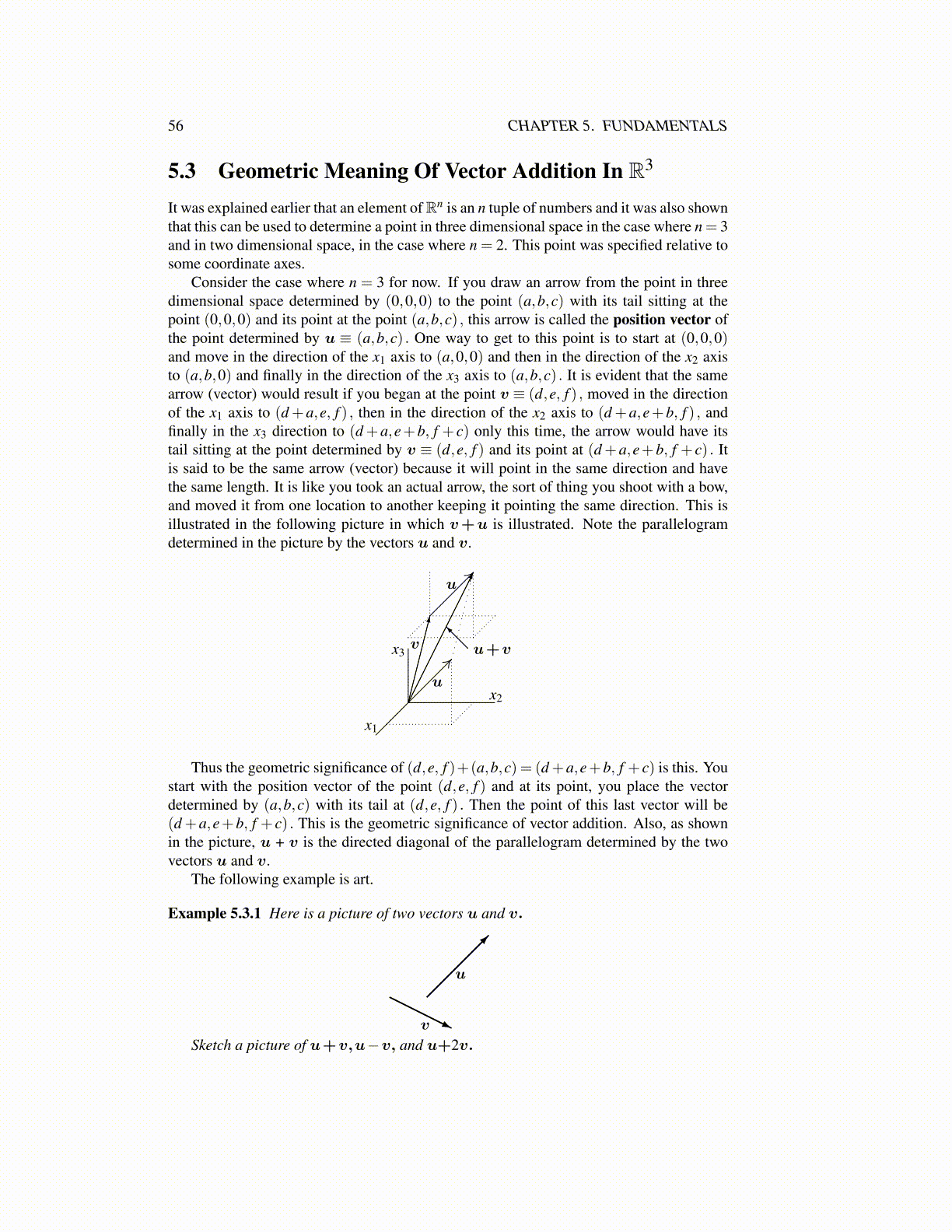
56 CHAPTER 5. FUNDAMENTALS
5.3 Geometric Meaning Of Vector Addition In R3
It was explained earlier that an element of Rn is an n tuple of numbers and it was also shownthat this can be used to determine a point in three dimensional space in the case where n= 3and in two dimensional space, in the case where n = 2. This point was specified relative tosome coordinate axes.
Consider the case where n = 3 for now. If you draw an arrow from the point in threedimensional space determined by (0,0,0) to the point (a,b,c) with its tail sitting at thepoint (0,0,0) and its point at the point (a,b,c) , this arrow is called the position vector ofthe point determined by u ≡ (a,b,c) . One way to get to this point is to start at (0,0,0)and move in the direction of the x1 axis to (a,0,0) and then in the direction of the x2 axisto (a,b,0) and finally in the direction of the x3 axis to (a,b,c) . It is evident that the samearrow (vector) would result if you began at the point v ≡ (d,e, f ) , moved in the directionof the x1 axis to (d +a,e, f ) , then in the direction of the x2 axis to (d +a,e+b, f ) , andfinally in the x3 direction to (d +a,e+b, f + c) only this time, the arrow would have itstail sitting at the point determined by v ≡ (d,e, f ) and its point at (d +a,e+b, f + c) . Itis said to be the same arrow (vector) because it will point in the same direction and havethe same length. It is like you took an actual arrow, the sort of thing you shoot with a bow,and moved it from one location to another keeping it pointing the same direction. This isillustrated in the following picture in which v+u is illustrated. Note the parallelogramdetermined in the picture by the vectors u and v.
u
v u+v
u
x1
x3
x2
Thus the geometric significance of (d,e, f )+(a,b,c) = (d +a,e+b, f + c) is this. Youstart with the position vector of the point (d,e, f ) and at its point, you place the vectordetermined by (a,b,c) with its tail at (d,e, f ) . Then the point of this last vector will be(d +a,e+b, f + c) . This is the geometric significance of vector addition. Also, as shownin the picture, u + v is the directed diagonal of the parallelogram determined by the twovectors u and v.
The following example is art.
Example 5.3.1 Here is a picture of two vectors u and v.
u
v
Sketch a picture of u+v,u−v, and u+2v.